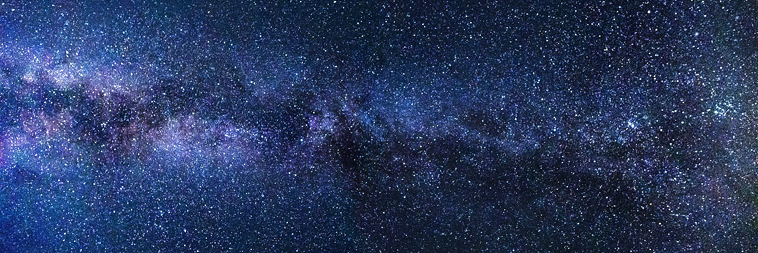What is the Mystery behind Black Holes?

A black hole in space is what forms when a star of massive size collapses. One of the main characteristics of a black hole is the tremendous power of its gravitational pull. This pull is so strong that nothing can escape it, not even light. The sphere-shaped boundary of a black hole in space is referred to as its event horizon. If a star or another object moves close to the event horizon it will be absorbed into the black hole and will not reemerge. The amount of mass in a black hole varies. Some black holes have a larger mass than the sun. Overall, they are known for the density of their formation.
The Existence of Black Holes
The existence of black holes was first suggested back in the late eighteenth century. Incorporating Newton’s Laws the theory of a star not visible to the eye was put forth by both Englishman John Michell and Frenchman Pierre LaPlace. These men worked on the mass calculations of what would later be labeled as the event horizon. However, it was not until 1967 that American physicist John Wheeler referred to this collapsed mass as a black hole.
- Amazing Truth About Black Holes: Learn about the scientists who first discovered the presence of a black hole and how one is studied today.
Formations
These formations are referred to as black holes partly because objects disappear into them but never come out. Even light cannot pass through the event horizon of a black hole to escape its grip. Therefore, the presence of a black hole may be detected by the influence it has on the objects around it. For instance, black holes have the ability to absorb stars that surround them. Black holes are powerful, dense masses in space that are hidden to a human’s eyes.
- The Elements of a Black Hole: A brief summary of black holes in space.
Types of Black Holes
There are three main types of black holes: the super massive, the stellar, and the miniature. The super massive black hole is found in the center of a galaxy. It grows to a tremendous size due to its absorption of the stars and other matter clustered all around it. A stellar black hole is said to be formed when a star of great size collapses at its core. The formation of a miniature black hole is connected with the Big Bang Theory. It’s theorized that miniature black holes appeared when the universe began to expand at a rapid rate.
- The Three Types of Black Holes: An explanation of the three types of black holes and their characteristics.
Black Holes: Why?
What do black holes do in space? Black holes are invisible formations that use their irresistible gravitational pull to draw various stars and other objects down inside them. Their creation and existence is reliant on other matter in space. For instance, a stellar black hole is born when a star of exceptional size collapses or dies. Furthermore, a super massive black hole thrives on the absorption of matter around it. In many ways, a black hole is dependent on other formations in space.
- A Description of a Black Hole: An artist’s illustration accompanies a description of the workings of a black hole.
Big Bang Theory
Some of the scientific ideas behind black holes relate to the Big Bang theory. There is the theory that miniature black holes are a result of the fast compression of the universe when the Big Bang occurred. Alternatively, another scientific theory states that the Big Bang and the creation of black holes are fundamentally different ideas. The precise origins and properties of black holes remain unclear but intriguing theories continue to surface in the scientific world.
- The Big Bang Theory and Black Holes: Questions and theories are discussed about the Big Bang theory and its possible connection to black holes.
- Explanation of the Big Bang Theory: Features discussion and questions regarding the Big Bang theory.
Cygnus X-1
Some scientists contend that there are black holes across the universe, including in the Milky Way. The Cygnus X-1 is a body in space that has been studied since the early 1960s. It’s a source of X-rays which causes scientists to believe it is a black hole. Since black holes are not visible, the conditions around a possible candidate must be monitored by scientists. For instance, scientists look for a dense mass and the amount of stars around the mass. A black hole is not an object in space that can be observed from earth in the same way a star or a planet can be. The discovery of a black hole requires close scientific observation and high-tech equipment.
- The Cygnus X-1, Black Hole: A concise description of this black hole and its characteristics.
- Information About Black Holes: A collection of data regarding black holes including how they can be detected.
- An Illustration of the Cygnus X-1: An illustration of the Cygnus X-1 accompanied by explanation.
There are still many unknown factors when it comes to black holes but physicists continue their endeavors to unlock the secrets of these quietly powerful formations in space.
